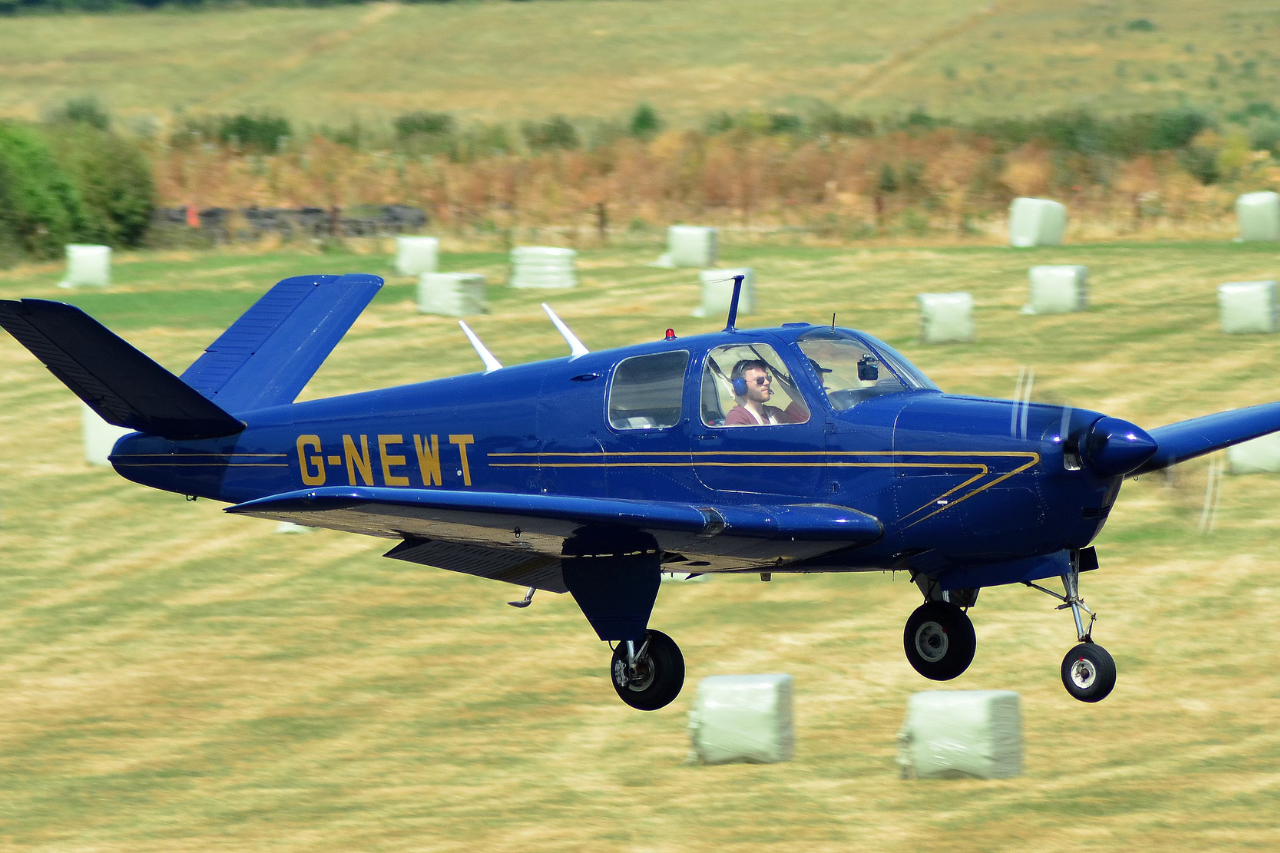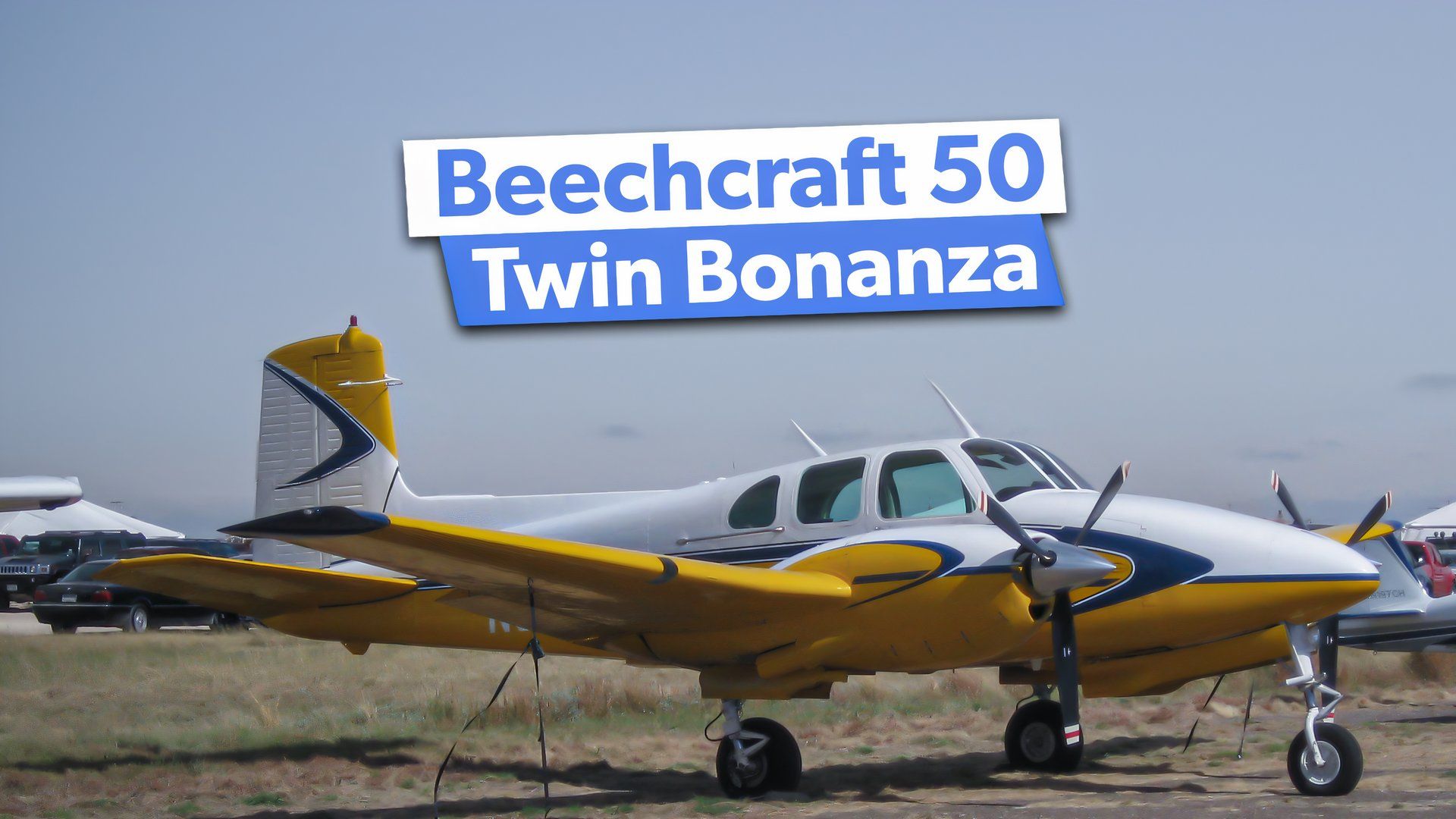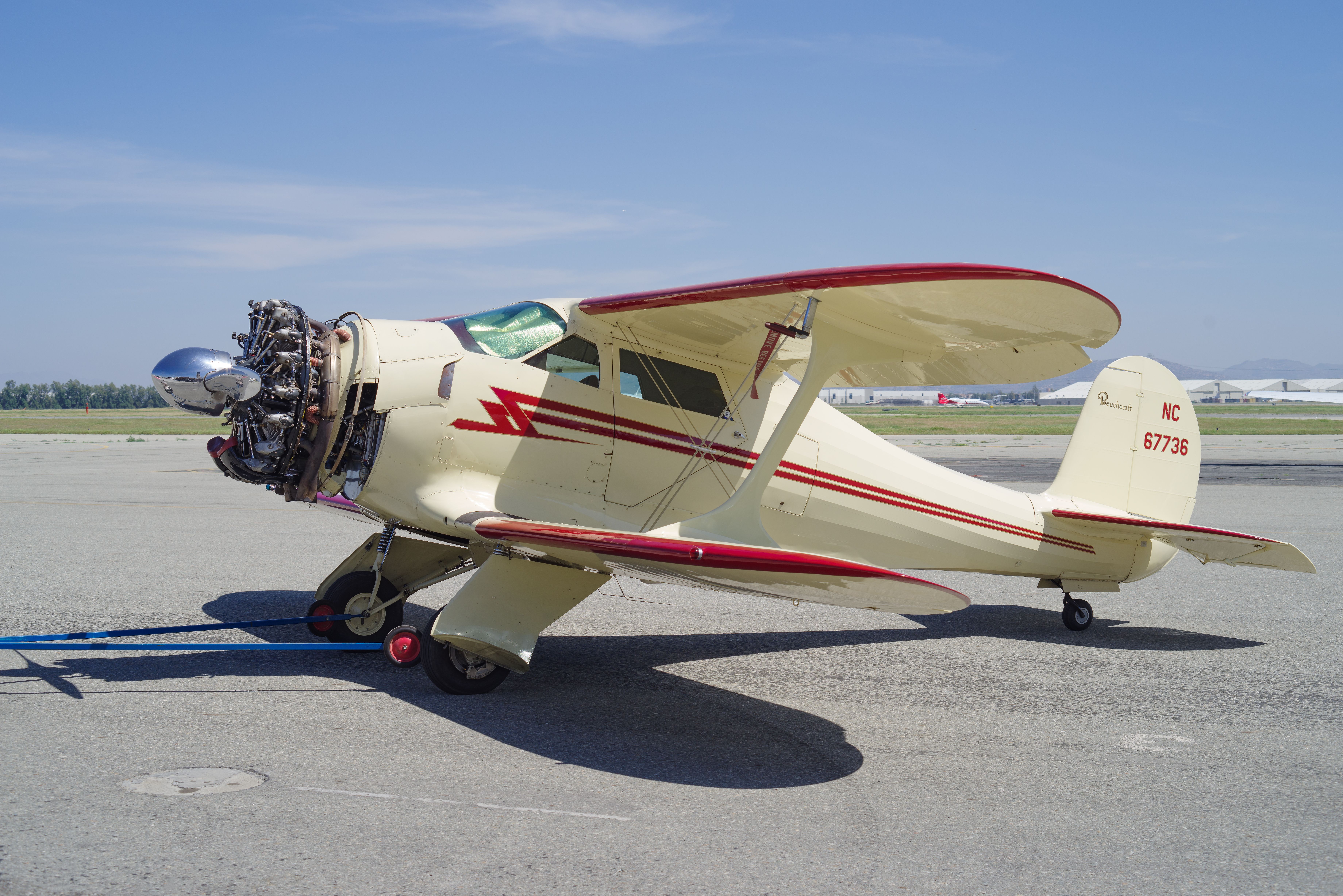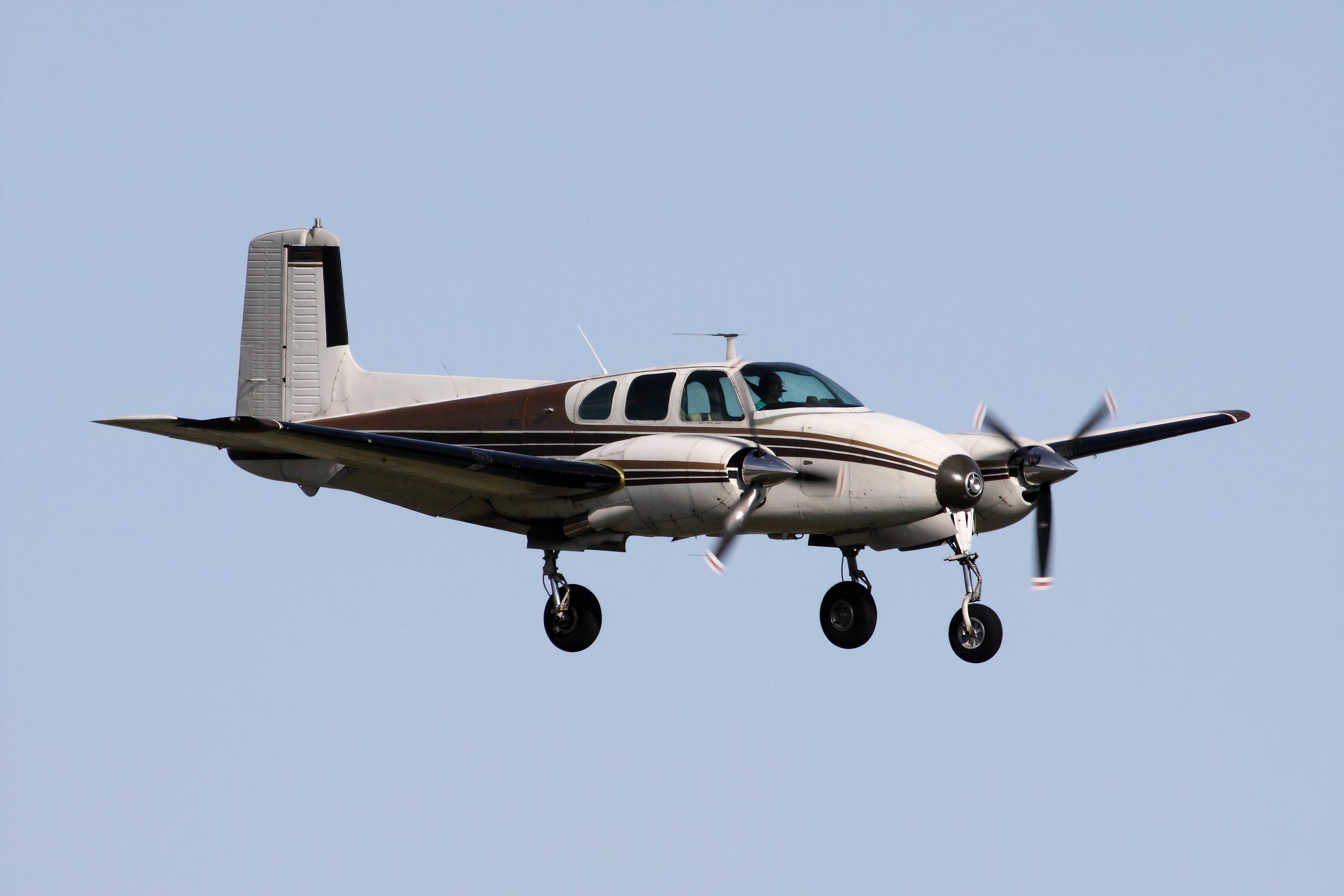Beechcraft is one of the most popular general aviation manufacturers in the world. The company was founded by Walter Beech, his wife, Olive Ann Beech, and legendary aircraft designer Ted A. Wells. Walter Beech had previously founded Travel Air Manufacturing Company, another early aircraft manufacturer. After Travel Air Manufacturing Company merged with Curtiss-Wright, Beech was promoted to Vice President. However, his new role kept him far from the actual production of the aircraft, and he became dissatisfied with his role.
Photo: Angel DiBilio | Shutterstock
Beech quit shortly after the merger to found his own company. He brought Ted A. Wells, one of the top aircraft designers at the company, and together, with the help of his wife, they founded Beechcraft in 1932. The team immediately went into the development of a new piston-engine aircraft. Shortly after, Beechcraft released the Beechcraft Model 17 Staggerwing, the company’s first aircraft. This aircraft was a success in the general aviation industry and was also converted into a military trainer for the United States government. The successful release of the Model 17 Staggerwing proved Beechcraft was a big part of the aviation industry.
Beechcraft was founded nearly 100 years ago. Since then, the Wichita, Kansas-based company has produced a wide range of impressive aircraft. Currently, the company produces:
- Beechcraft Bonanza
- Beechcraft Baron
- Beechcraft King Air 260
- Beechcraft King Air 360
- Beechcraft T-6 Texan II
- Beechcraft Denali (once it is certified, predicted to occur in 2025)
Historically, Beechcraft has been known for its piston-powered and turboprop-powered aircraft. The company also briefly entered the business jet market with the production of the Beechjet and the Beechcraft Premier private jets.

Related
A Guide To All The Beechcraft Business Aircraft
Six planes spanning four series.
One of Beechcraft’s most popular piston-powered aircraft is the Bonanza series. Since its introduction in the 1940s, Beechcraft has produced nearly 20,000 Bonanzas, and it has the longest-running production line of any aircraft family. However, many aviation enthusiasts are unaware that Beechcraft created a twin-engine model similar to the single-engine Bonanza. Let’s take a closer look at the Beechcraft Twin Bonanza and what made it so special.
About the Twin Bonanza
Beechcraft first began conceptualizing a twin-engine aircraft in the late 1940s. The company noticed a product gap in its offerings, located between the Model 35 Bonanza, as mentioned earlier, and the Model 18, a twin-engine utility and transport aircraft. Beechcraft intended to create a utility-style aircraft with twin engines slightly smaller than the larger existing Model 18.

Related
Why Was The Beechcraft Bonanza Nicknamed The ‘Doctor Killer’?
The single-engine plane has an enduring reputation that is as iconic as it is ominous.
The aircraft flew for the first time in November 1949, only seven months after the project was officially introduced. The aircraft received its type certificate in 1951, and it entered production that same year. The aircraft was certified as a utility aircraft, although many considered it a civil aircraft.
The Twin Bonanza was later chosen by the United States Army to be used as a transport aircraft. The US Army was very happy with the aircraft, which was later designated the L-23 Seminole, and ordered over 215 total aircraft throughout its production years. At the time, the L-23 Seminole was the largest fixed-wing aircraft that the US Army used.
Overall, the Twin Bonanza was produced from 1951 through 1961, and nearly 1,000 aircraft were delivered. Beechcraft later used the Twin Bonanza as inspiration for both the Queen Air and the King Air. The Queen Air incorporated a larger cabin, whereas the King Air added a turboprop engine.
Design features of the Twin Bonanza
Although the aircraft is designated as the Twin Bonanza, the aircraft has very few similar features to the popular single-engine aircraft. Overall, the Twin Bonanza featured a fuselage that was a foot wider than the Bonanza, and it was also much heavier. The only visible similarity between the two aircraft is the windows and associated frames.
Photo: Bruce Leibowitz | Shutterstock
The Twin Bonanza has a low, cantilever wing with retractable landing gear. One unique feature is that the wheels of the main landing gear do not completely retract into the aircraft, leaving the tires marginally exposed. The larger airframe has a 54-inch-wide interior cabin, which fits six passengers in a standard configuration. However, the aircraft can also be configured to utilize club seating.
Beechcraft originally chose Franklin Engine Company to build its engines. However, all resources in the company were eventually diverted to the Tucker 48 project. Because of this, Beechcraft chose the Lycoming GO-435 to power the aircraft. The company did not perform a complete redesign of the nacelles, and the smaller engine left unusual gaps under the nacelles, which made maintenance easier.
The powerful Lycoming engines, which provided up to 340 horsepower depending on the variant, helped the aircraft reach the following specifications:
|
Length |
31 feet seven inches |
|---|---|
|
Height |
Eleven feet four inches |
|
Wingspan |
45 feet three inches |
|
Gross weight |
6,300 pounds |
|
Maximum speed |
186 knots (214 miles per hour) |
|
Range |
1,430 nautical miles (1,650 miles) |
|
Service ceiling |
20,000 feet |
Who flies the Twin Bonanza?
Many different types of operators utilized the Twin Bonanza. As previously mentioned, the Twin Bonanza was successful as a military aircraft, getting over 215 orders from the US Army. Other military operators of the aircraft include:
- Chilean Air Force
- Colombian Air Force
- Pakistan Army
- Royal Jordanian Air Force
- Royal Moroccan Air Force
- Swiss Air Force
- Uruguayan Air Force
In the civil aviation market, the Twin Bonanza was less successful. The aircraft was fairly heavy, and it was heavier than its competitors, the Cessna 310 and the Piper PA-23. The Twin Bonanza had a reputation for being slow and having poor fuel economy. However, the aircraft was very reliable and was easy to fly.



